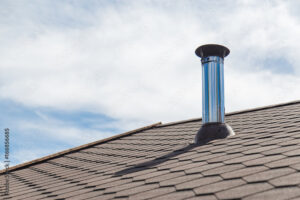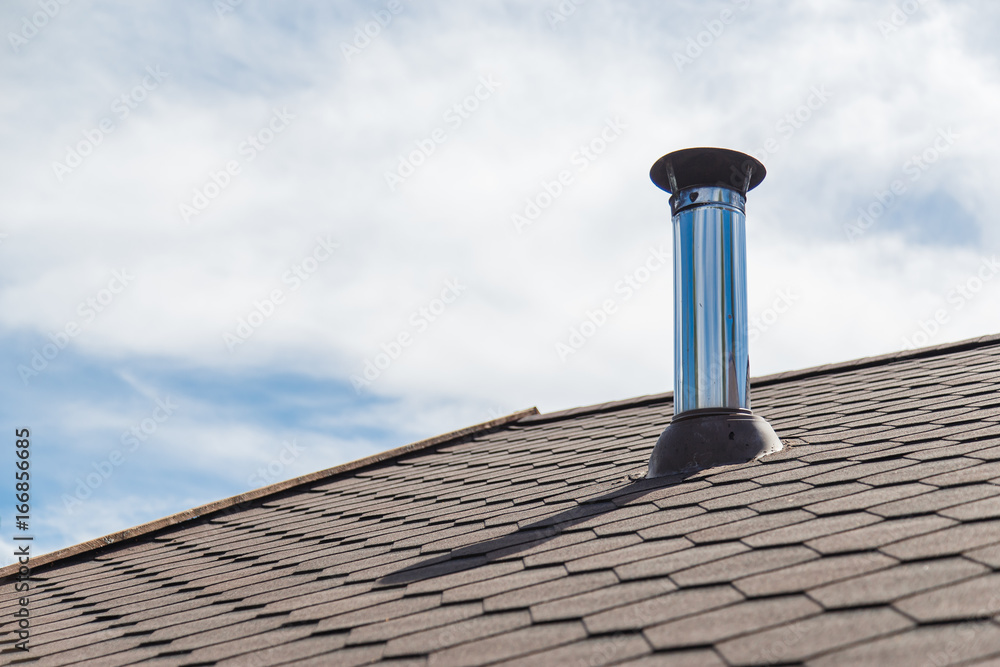In the past, chimney sweeps employed children as young as 4. They would climb into hot flues using their backs and elbows while a master sweep knocked loose soot with a brush over their heads. They received no pay. Clean Chimney Sweep Charleston can navigate tight spaces and thoroughly inspect heating systems and fireplaces. Whether self-employed or an employee, the right attitude is crucial.

There’s no doubt that sweeping chimneys is a dirty job. It requires dealing with ash, dust, and discarded wood logs. You also work with creosote, a sticky substance that builds up on fireplace and chimney structures over time and is highly flammable. This material is the main cause of chimney fires, and you must be prepared to remove it from the walls, lining, and flue of every fireplace you inspect and clean.
The job also requires the ability to crawl into tight spaces. It may involve navigating in crawl spaces underneath homes and into attics. You also spend much time on the roof, inspecting and repairing fireplaces and heating systems. You need to be able to do this while wearing a face mask and using appropriate safety equipment.
Chimney sweeps use brushes, poles, and vacuums to ensure that a chimney’s lining is free of debris. It is important because it helps to keep your home safe from the dangerous fumes that can build up in a chimney. A good chimney sweep will also take the time to look for signs of smoke or water in the fireplace and its flue, which can be a sign of a fire hazard or other issues.
Before the chimney sweep begins, you should talk with them about any concerns you have with your fireplace and chimney. Make a list of these, so you don’t forget to mention anything important. It will also help the sweep plan their work.
A chimney sweep will typically put down a drop cloth or plastic to protect your home from the mess of ashes and dust, as well as a dual HEPA filter vacuum that should be running throughout the process to minimize the amount of debris that gets in the air of your home. You should move any furniture or other items before your fireplace so the sweep has a clear path.
If you have children, sending them to stay with a friend or family member while the chimney sweep is working is best. The sweeping and cleaning process can be loud, and it’s unsafe for them to be in the room when the chimney sweep uses powerful tools.
You’ll need to find new customers independently as an independent business owner. It may mean making door-to-door inquiries or using social media to get the word out. You’ll also need to balance your bookkeeping to have enough funds to weather lull periods. Chimney sweeps often work as contractors, so it’s important to be able to generate your client base.
Chimney sweeping isn’t glamorous work but can be lucrative and rewarding. It isn’t a career path you should jump into without getting some training or job experience to see if it fits you. Consider working for a larger chimney sweep company as a technician or crew member to learn more about the industry before you open your own business.
The most important thing to remember about being a chimney sweeper is to be prepared for hard, dirty work. You’ll need various tools, including a brush with a long handle, a vacuum cleaner with a hose attachment, and protective gear such as goggles, gloves, and a dust mask. If your job involves climbing, make sure you’re ready to wear appropriate footwear. Teach children to avoid playing near the work area if you have children. And if you have pets, ensure they are secured in another room or outside until your job is done.
As with any business, there are several legal aspects to remember when starting a chimney sweep business. You must choose your business structure (LLC, partnership, or sole proprietorship), register with local and state companies, and obtain necessary permits or licenses. You must also protect yourself from liability by obtaining general insurance and worker’s compensation.
It’s also a good idea to optimize your business processes using software like WorkWave, which can help you manage scheduling, dispatching, invoicing, and more on a computer desktop or as a mobile app. It will reduce the risk of error and make your chimney sweeping process more efficient so you can provide better customer service and build a solid reputation for quality work.
Chimney sweeps are responsible for cleaning fireplaces, chimneys, and flue pipes and informing homeowners about proper burning practices. They also perform minor repairs, such as replacing a chimney cap or liner. Because a chimney can be extremely dangerous, this work requires specific skills and knowledge of fire prevention and extensive training in the safe use of tools.
The job of a chimney sweep is often dirty and messy, but a good sweeper will take proactive measures to protect the surrounding home or business and clean up after themselves before leaving. They’ll put down drop cloths or plastic and use a powerful, dual HEPA filter vacuum to keep dust levels low while scrubbing away gunk, soot, ash, and creosote inside chimneys, linings, and flue pipes.
They’ll have specialized tools, such as brushes, power tools, and various attachments for handheld devices, to remove blockages in chimneys. A sweeper should be ready to wear protective eyewear and gloves for their hands, which may come into contact with rust or sharp edges. Likewise, they should check their equipment regularly for any faulty parts or signs of wear and tear, as this will help ensure safety and maximize tool efficiency.
While the job may seem relatively easy, it can quickly become tiring when working above ground level for extended periods. Chimney sweeps should be aware of their stamina and take regular breaks from work to refresh themselves. It will help to prevent burnout and injuries.
Chimney sweeps must be able to work at heights and navigate tight spaces. They’ll sometimes need to enter a crawl space to conduct an inspection, so they mustn’t be claustrophobic or afraid of enclosed spaces. They’ll also need to be comfortable climbing ladders and working on the roof of a house or other building.
While it’s not mandatory for a chimney sweep to be certified, this credential from the Chimney Safety Institute of America can help set them apart from competitors and show customers they are qualified to perform their services safely. Regardless of their current employer, it’s a worthwhile investment for any aspiring chimney sweep.
Chimneys are the perfect nesting places for animals, being dark, cool, and protected from disturbing elements. Unfortunately, when they’re filled with animal droppings, nesting materials, and other debris, they obstruct airflow, increase the risk of fire, and lead to home carbon monoxide poisoning.
Fortunately, chimney sweeps have the tools and training to deal with the most common animals in a fireplace. They know how to remove animal nests and feces while respecting the safety of pets and children. They also have the equipment to vacuum and clean up the mess once they’re finished.
If you want to avoid a chimney disaster, schedule regular sweepings and cleanings. Chimney sweepings help to prevent creosote build-up, which can clog the flue and cause smoke to back up into your house. Creosote is highly flammable and can ignite at high temperatures. Besides preventing chimney fires, sweepings can keep your home more comfortable by allowing the fireplace to vent properly and reducing the amount of ash and debris in the flue.
Annual sweepings are also required to ensure the flue is free of obstructions that can cause deadly carbon monoxide poisoning. Carbon monoxide is an odorless gas produced by furnaces and other appliances that are not vented correctly. Carbon monoxide detectors should be installed in every room where people spend time.
Before your chimney sweep arrives, it’s a good idea to clear a path for them to work. It will prevent them from having to dodge furniture, pictures, clocks, and other items on the mantle. It’s also a good idea to move anything that could get dirty during the sweeping process, like rugs and tapestries.
A chimney is dangerous for children and pets, so it’s important to keep them away from the area. Chimney sweeps may also have to remove wildlife from the chimney, so it’s a good idea to put down some food or water in case they need to lure animals away. It’s also a good idea for homeowners to have smoke and carbon monoxide alarms and test them regularly to ensure they are working.

